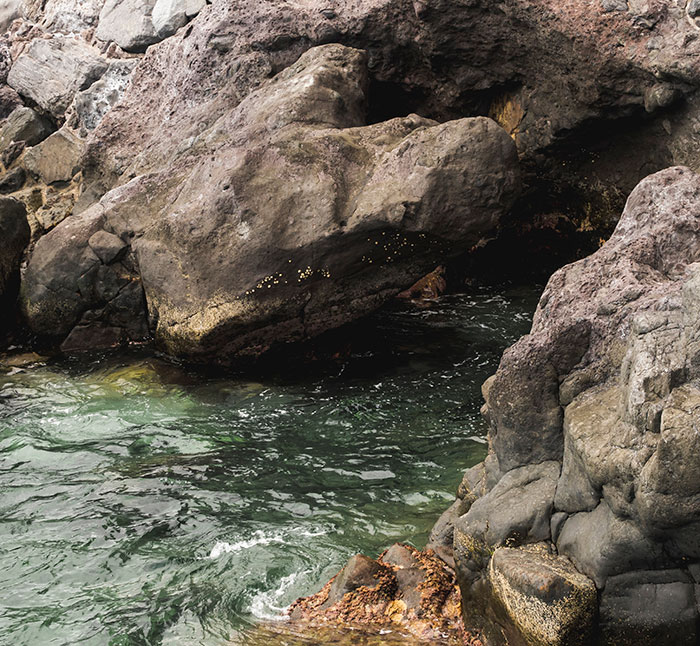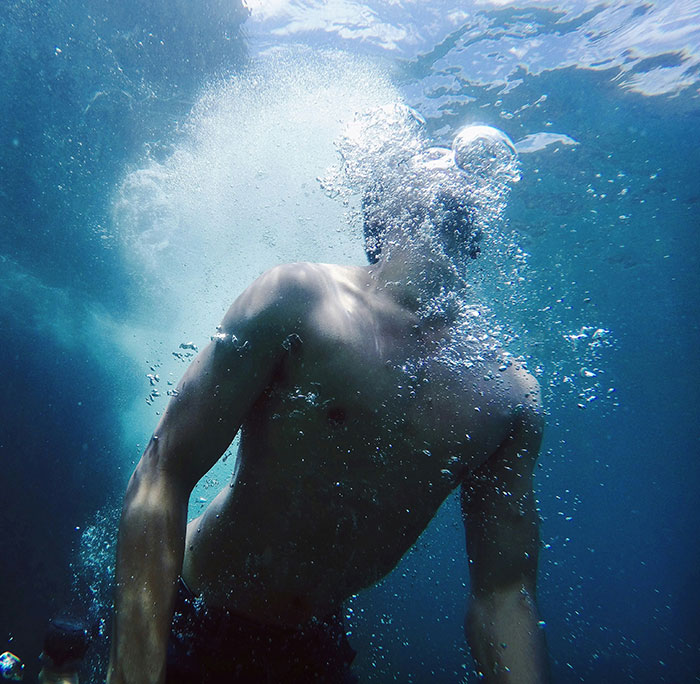The sixteen-second clip, shared by @PicturesFolder, shows him jumping feet-first into the water in his Speedo near a small waterfall. The man doesn’t float to the surface after his dive, causing concern among the three people standing near the waterfall. Following his jump, the trio begins stirring the water in an attempt to clear the bubbles and spot him. It is unclear where the video was filmed or if the man is dead or alive.
Share iconA man seems to have disappeared after jumping into a water hole near a small waterfall
Image credits: freepik In the comments, people expressed concern for his safety and shared their theories about what might have happened to him. “I really want to know if he is okay! Who has details???” someone wrote, while another said, “Maybe if they dig a bit faster, he might magically appear.” “They might be in shock or unsure how to help safely,” a separate user responded. “Sometimes hesitation comes from fear of making things worse.” “He kinda looked like he knew where he was going,” a fourth, less concerned user wrote. Another said: “If there’s a cave system beneath the surface, the water could have pulled him under. I desperately hope he’s safe and sound.”
A video posted on X shows three individuals trying to spot him after he jumped into a natural pool of water
Share icon Image credits: PicturesFoIder Share icon Image credits: Hayato Shin “There can be a whirlpool,” somebody else suggested. “Most whirlpools aren’t cause for concern.” A whirlpool is a rotating body of water that occurs when two currents meet or one current hits a wall. They can form in rivers, large lakes, and at the base of waterfalls. In narrow ocean straits with fast-flowing water, whirlpools are often caused by tides. Strong whirlpools can pull a person underwater and trap them in a circular or downward motion. Once submerged, it can be very difficult to escape, as the movement can leave people disoriented and stuck without air. According to the Niagra Parks website, some whirlpools grow and vanish over a short period of time, while other water systems maintain whirlpools for centuries.
People suggested that the man might have drowned after being sucked into a whirlpool or hitting his head on the rocks
Share icon Image credits: PicturesFoIder Another theory is that the man struck rocks or the side of the natural pool, resulting in physical trauma that left him unconscious or prevented him from swimming to the surface. He could also have died due to the natural pool being “aerated,” which occurs when water is mixed with air. The air bubbles decrease the water’s buoyancy, making it harder for a person to stay afloat. In May 2013, acclaimed photographer Jacob Cockle died in the sea after getting sucked into a whirlpool in a harbor in Cornwall, England. Cockle, who won awards for his sea photography from National Geographic, wanted to capture what the inside of a whirlpool would look like from his GoPro camera. He dove down into the sea to get an underwater shot, but the current was too strong. His friend found him floating in the water, facing down. Weeks before his death, the 28-year-old had won a £28,000 ($36,650) expedition to Antarctica, which was one of his dreams. Share icon Image credits: PicturesFoIder Last August, three tourists from Utah, USA, drowned when two tried to rescue the third from a whirlpool in California. The victims, identified as David Bell, Jeannine Skinner, and Peter On, were sucked into the whirlpool while canyoneering with a group along the Kern River. Though rescuers were able to get their bodies out in seven minutes and did CPR on them immediately, they were not able to revive any of them.
Watch the video below:
Video credits: PicturesFoIder — non aesthetic things (@PicturesFoIder) September 8, 2024 If you get someone out of the water who shows no sign of breathing, pinch their nose and keep their head tilted back as you breathe into their mouth from yours. Try to make as good a seal as you can with your mouth over theirs and give them five rescue breaths that last one second each. After that, push down right in the center of their chest firmly, using both hands (one on top of the other). Push down 5-6 cm each time, twice a second. It may help to remember this sequence matches the rhythm of the song Stayin’ Alive by the Bee Gees. Do this for one minute (120 compressions). If this doesn’t help, do 30 chest compressions followed by two rescue breaths over and over again while you wait for emergency services to arrive. The biggest killer in cases of drowning is a lack of oxygen in the body, explains A&E doctor, Saleyha Ahsan. CPR and rescue breaths help get oxygen to the victim’s brain and organs.
Netizens reacted to the clip, with many sharing their theories about what might have happened to the man
Share icon Share icon Share icon Share icon Share icon Share icon Share icon Share icon Share icon Share icon Share icon Share icon Share icon Share icon Share icon Share icon Anyone can write on Bored Panda. Start writing! Follow Bored Panda on Google News! Follow us on Flipboard.com/@boredpanda!




















